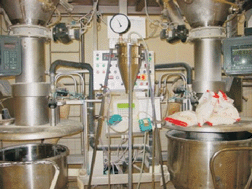Airborne exposure to wheat allergens: optimised elution for airborne dust samples
Abstract
Well-validated methods for measuring airborne occupational allergens are essential for effective control and

* Corresponding authors
a
Institute for Risk Assessment Sciences, Division Environmental Epidemiology, Utrecht University, PO Box 80178, The Netherlands
E-mail:
j.bogdanovic@iras.uu.nl
Fax: +31 30 253 9499
Tel: +31 30 253 1468
b Berufsgenossenschaftliches Forschungsinstitut für Arbeitsmedizin, Ruhr-Universität, Bochum, Germany
c Health and Safety Laboratory, Buxton, United Kingdom
d University Hospital Vall D’Hebron, Barcelona, Spain
Well-validated methods for measuring airborne occupational allergens are essential for effective control and

 Please wait while we load your content...
Something went wrong. Try again?
Please wait while we load your content...
Something went wrong. Try again?
J. Bogdanovic, I. M. Wouters, I. Sander, E. Zahradnik, J. Harris-Roberts (nee Elms), M. Rodrigo, S. Gómez-Ollés, D. J. J. Heederik and G. Doekes, J. Environ. Monit., 2006, 8, 1043 DOI: 10.1039/B608770A
To request permission to reproduce material from this article, please go to the Copyright Clearance Center request page.
If you are an author contributing to an RSC publication, you do not need to request permission provided correct acknowledgement is given.
If you are the author of this article, you do not need to request permission to reproduce figures and diagrams provided correct acknowledgement is given. If you want to reproduce the whole article in a third-party publication (excluding your thesis/dissertation for which permission is not required) please go to the Copyright Clearance Center request page.
Read more about how to correctly acknowledge RSC content.
 Fetching data from CrossRef.
Fetching data from CrossRef.
This may take some time to load.
Loading related content
